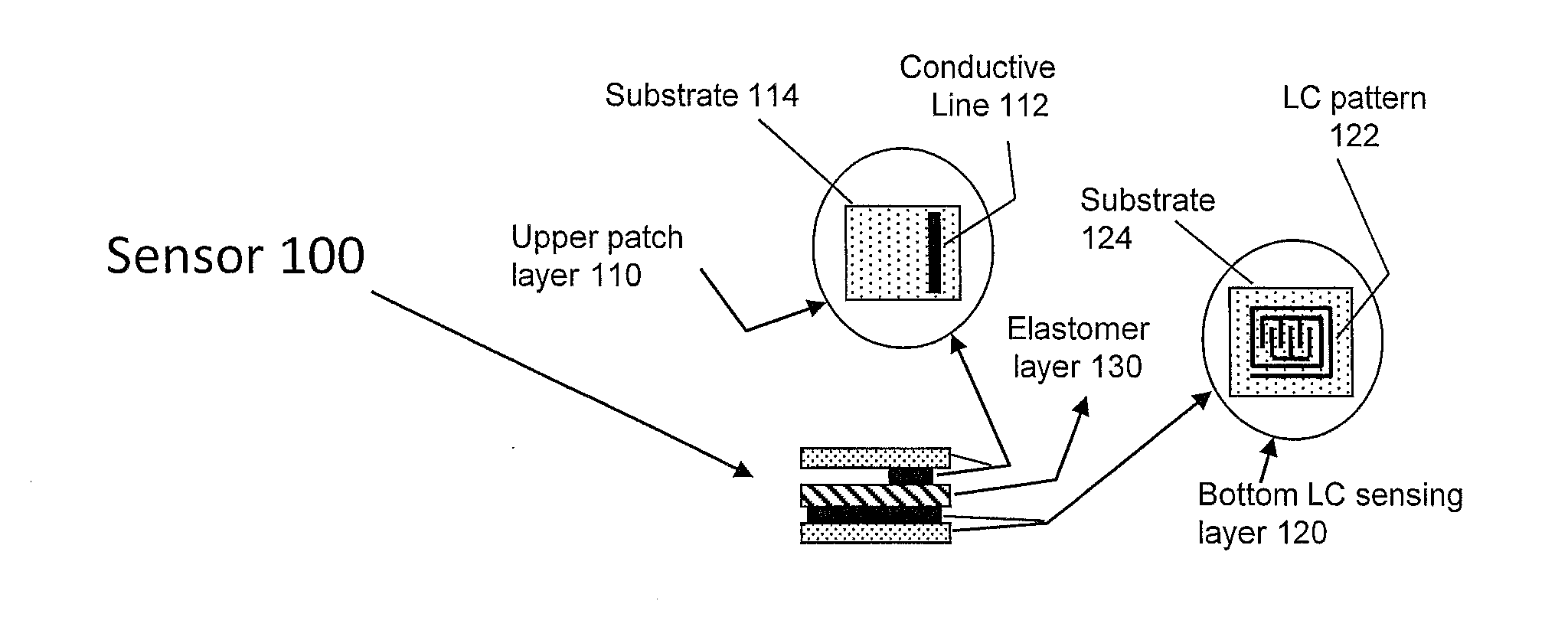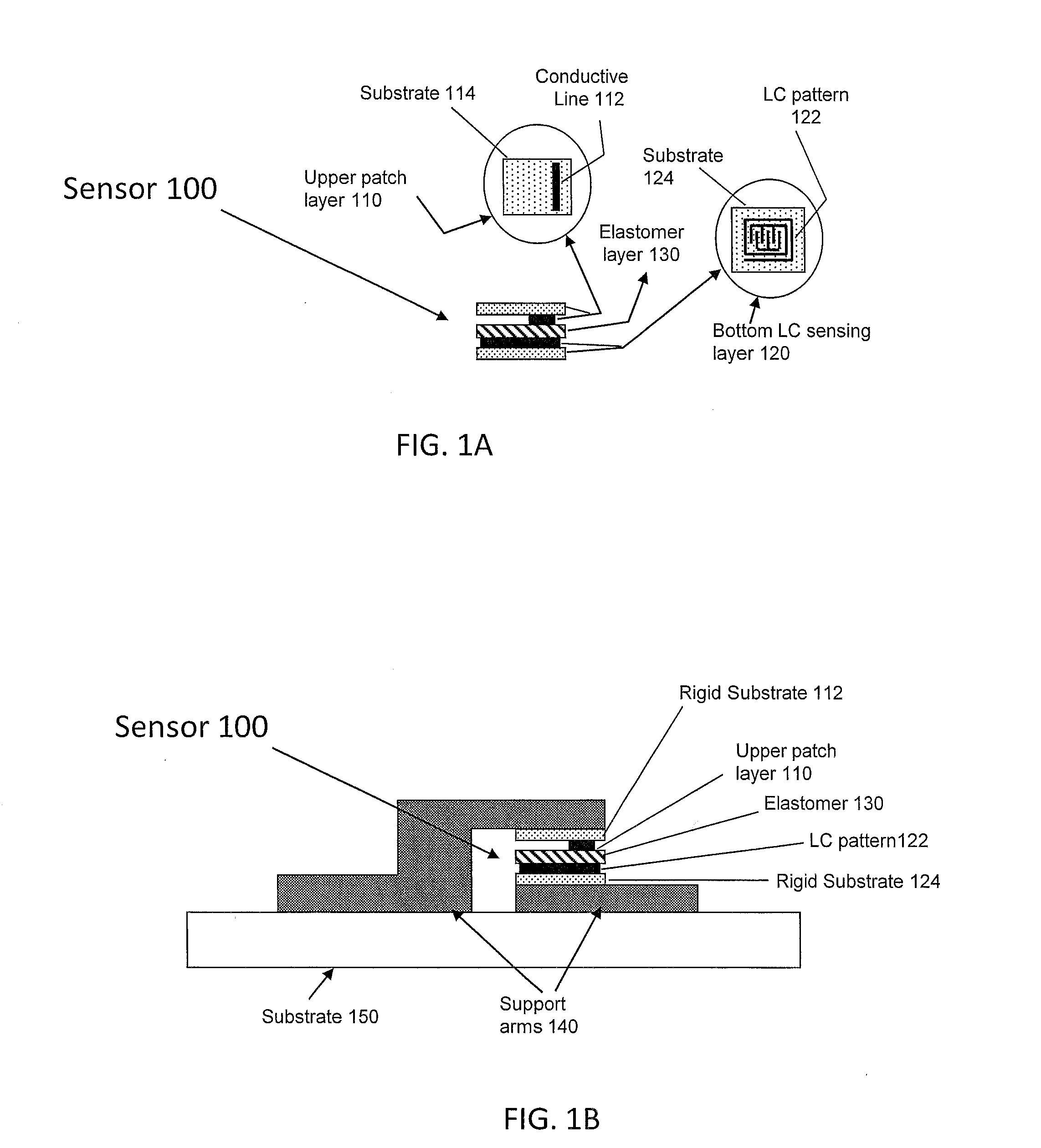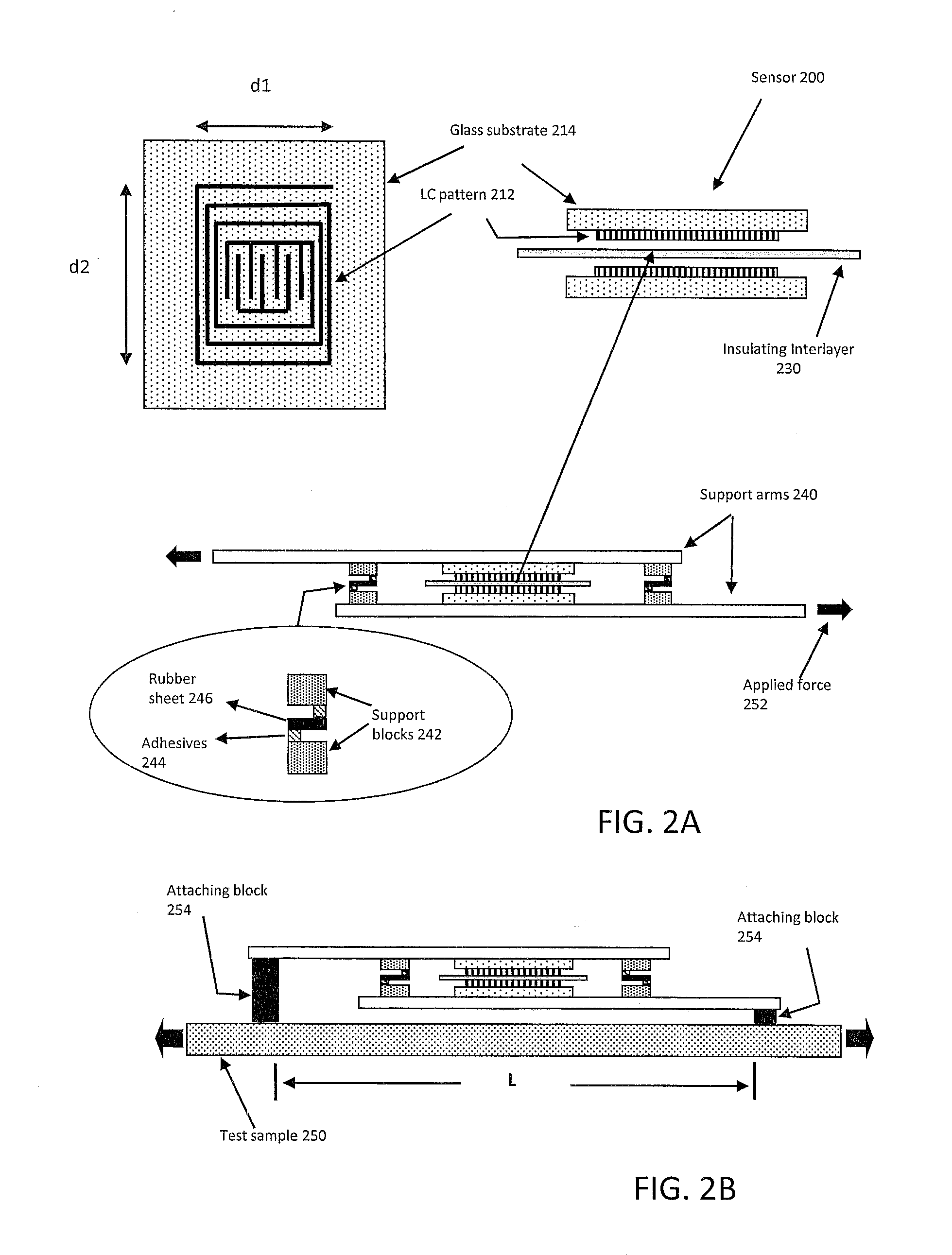Wireless Passive Radio-Frequency Strain And Displacement Sensors
a passive radiofrequency and sensor technology, applied in the direction of fluid pressure measurement, fluid pressure measurement by electric/magnetic elements, instruments, etc., can solve the problems of fragility and susceptibility to damage, low cost and easy installation of resistive metal foil strain gauge sensors, and physical connection between the sensor and the interrogation unit is also prone to corrosion and fracture, and achieves the effect of prolonging the fatigue li
- Summary
- Abstract
- Description
- Claims
- Application Information
AI Technical Summary
Benefits of technology
Problems solved by technology
Method used
Image
Examples
example 1
Tensile and Compressive Load Measurement
[0040]Interdigital capacitance and meander inductance patterns were prepared by screen printing technology as described above to form upper and lower sensing layers. The size of LC pattern (lower layer) is 40 mm×40 mm, and line pattern of upper patch layer 30 mm×3 mm. An adhesive elastomer layer was inserted between the two conductive layers as shown in FIGS. 1A and 2A to create the sensor. The RF response of strain sensors was measured using a vector network analyzer in reflection mode (i.e., an S11 measurement). The vector network analyzer transmitted a swept RF signal to the strain sensor, which absorbed the incident RF signal at a resonance whose center frequency varied with the applied load.
[0041]FIG. 5 shows a plot of resonant frequency shift caused by a tensile load applied to a strain sensor similar to sensor 100 of FIG. 1. Alternating solid, dashed, and dotted lines show that the absorption resonance (a valley with an amplitude of abo...
example 2
Cracked Sensor Interrogation
[0045]Detection of cracks and structural damage in the absence of clear line of sight detection is still an important challenge. Fortunately, the RF-based measurements described herein can be applied to the detection of cracks in various structures, including ceramic plates used in body armor. Structural damage, such as a crack on a ceramic plate, leads to a detectable change in the RF response. The ultimate sensitivity of the measured RF response is determined by the size of the metal flake present in the silver ink used for the fabrication of the sensor. The success of these sensors ultimately depends on their performance and ease of manufacture.
[0046]Most RF-based inductor-capacitor (LC) resonant sensors reported to date are fabricated using techniques such as photolithography, inkjet printing, thermal spray, and laser micromachining. In this example, a sensor was created using the screen-printing techniques described above. Conductive silver inks were...
example 3
Passive Wireless Sensor Arrays
[0050]Sensors and sensing elements may also be arranged in periodic or aperiodic arrays. In addition, different sensors and sensing elements in the array(s) may be oriented in different directions, depending on the application. Because the individual sensors are displaced from each other and / or oriented in different directions, each sensor measures a projection of the applied displacement along a different basis (set of axes). These measurements can be used to trace the direction of displacement or applied strain by measuring the change in resonant frequency profile of each of the sensors caused by the relative displacement of the sensing element on complementary layers.
[0051]FIG. 10 shows an example sensor 900 with four sensing elements 902a-902d (LC1, LC2, LC3, and LC4) printed on a single surface to formed a single sensing layer. Another sensing element 904 (LC0) was printed on an upper surface to form a complementary sensing layer. The upper sensing...
PUM
| Property | Measurement | Unit |
|---|---|---|
| Electrical conductivity | aaaaa | aaaaa |
| Adhesivity | aaaaa | aaaaa |
| Frequency | aaaaa | aaaaa |
Abstract
Description
Claims
Application Information
 Login to View More
Login to View More - R&D
- Intellectual Property
- Life Sciences
- Materials
- Tech Scout
- Unparalleled Data Quality
- Higher Quality Content
- 60% Fewer Hallucinations
Browse by: Latest US Patents, China's latest patents, Technical Efficacy Thesaurus, Application Domain, Technology Topic, Popular Technical Reports.
© 2025 PatSnap. All rights reserved.Legal|Privacy policy|Modern Slavery Act Transparency Statement|Sitemap|About US| Contact US: help@patsnap.com



